Dale is a small village and parish in Pembrokeshire, located on the Dale Peninsula which forms the north side of the entrance to Milford Haven estuary. It was once a marcher borough. There is a Victorian fort located on a rocky promontory that houses a field studies centre. The area is a popular tourist area. The War Memorial which commemorates the memory of the men of Dale, who gave their lives in both World Wars takes the form of a soldier of the Great War stood to arms atop a Marble Pillar engraved with the names of the fallen, and is sited in Dale Cemetery.
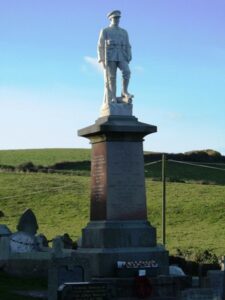
The Great War, 1914-1918
John Codd, Private, 46477, Welsh Regiment. John was born at St. Ishmaels in 1889, the son of Thomas and Sarah Ann Codd, of Hayguard Bay. He had married in 1909, and lived with his wife Hannah, and daughters Phyllis and Iris at Hayguard Bay prior to the war. John enlisted at Haverfordwest into the Army, and was posted to the 9th Battalion, Welsh Regiment, which was attached to 58 Brigade, 19th (Western) Division. The Division assembled around Bulford during September 1914, and had crossed to France during July 1915, moving to positions near Loos. The Division fought during the opening attack of the Battle of Loos, and then moved to the Somme, where it took part in the second wave of the attack on Ovillers-La Boiselle on 1 July 1916, capturing the village at heavy cost. It then fought through the Somme Battles of Pozieres and the Ancre in 1916. The Division moved north to Ypres in 1917, and took part in the Battle of Messines. John was killed in action at Messines on 7 June 1917, aged 27. John has no known grave, and is commemorated on the Ypres (Menin Gate) Memorial, Belgium.
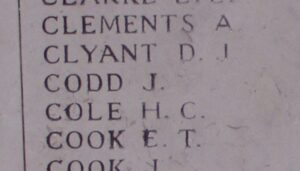
Arthur Edwards, MM, Bombardier, 64876, Royal Field Artillery. Arthur was born at Dale in 1893, the son of John and Catherine Edwards, of Hayguard Bay. Arthur had enlisted at Cardiff into the Royal Field Artillery on 21 April 1911, and at the outbreak of war was posted to France with the 112th Battery, 24th Brigade Royal Field Artillery, which was attached to the 6th Division. On 10 September 1914 the Division landed at St Nazaire and moved to reinforce the hard-pressed BEF on the Aisne, before the whole army was moved north into Flanders. Here the Division took part in the Action of Hooge during June 1915, and in 1916 moved to the Somme, where it fought at the Battle of Flers-Courcelette, the Battle of Morval and the Battle of Le Transloy. The following year saw it at Arras, where it fought at the Battle of Hill 70. Arthur came home on leave in the summer of 1917, and married Annie May Griffiths at Pembroke on 23 July 1917. He rejoined his unit in time to take part in the Battle of Cambrai later in the year. In the spring of 1918 the Division was one of those hit by the German Offensive on the Somme, which had been launched on 21 March 1918, and the Division took part in the Battle of St Quentin. Arthur was killed during the next few days terrible fighting around Achiet-le-Grand on 25 March 1918, aged 24. He has no known grave, and is commemorated on the Arras Memorial, France. Arthur had won the Military Medal for Bravery in the Field during his time on the Western Front, and the award was published in the London Gazette of 6 August 1918.
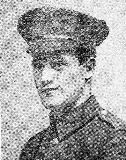
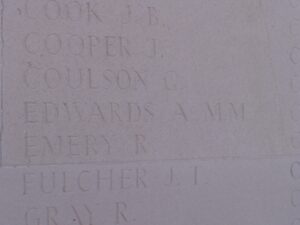
Walter Edwards, Private, 1750, Welsh Guards. Walter was the son of William and Susan Edwards, of Towns End, Dale. He enlisted at Haverfordwest into the Army, and was posted to the 1st Battalion, Welsh Guards. The Regiment was raised by Royal Warrant of 26 February 1915, at White City, before landing at Le Havre on 18 August 1915, becoming attached to 3rd Guards Brigade, Guards Division. The Division saw its first major action during the Battle of Loos on 25 September 1915, remaining in the area during the coming months, where they also fought in the subsequent Action of Hohenzollern Redoubt. In July 1916 the Division moved to the Somme, where they fought at the Battle of Flers-Courcelette, and then at the Battle of Morval, capturing Lesboeufs Village. They remained here for the winter, and in March 1917 took part in the advance caused by the German Retreat to the Hindenburg Line. Later that year they moved north to Ypres, where they fought at the Battle of the Pilckem, and then at the Battle of the Menin Road, Battle of Poelcapelle and the First Battle of Passchendaele. November saw them move south again, where they took part in the Battle of Cambrai. On 31 November 1917 the Welsh Guards were stationed at Havrincourt Wood, when a German counter-attack hit the area and smashed through the British lines. The Guards Division was ordered to secure Gauche Wood, and moved into positions there. The Welsh Guards attacked Gonnelieu the following day, but suffered heavy casualties during their attack. Walter was killed in action here on 1 December 1917, aged 27. He has no known grave, and is commemorated on the Cambrai Memorial, Louverval, France.
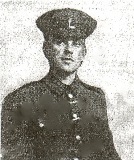
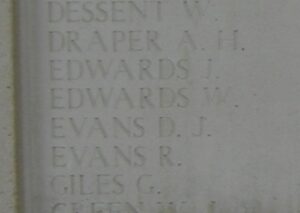
Walter Thomas Edwards, Gunner, 76761, Royal Garrison Artillery. Walter was the son of Richard and Elizabeth Edwards, of South Street, Dale. He enlisted at Haverfordwest into the Royal Garrison Artillery on 26 November 1915, and was posted to France on 10 July 1917, joining the 298th Siege Battery. Walter moved with his Battery to Ypres during the summer of 1917, where it provided heavy artillery support for the assault on Passchendaele Ridge. He was wounded after the main battle had been closed down. Sadly he died as a result of his wounds at the 44th Casualty Clearing Station on 23 December 1917, aged 30. Walter is buried at Nine Elms British Cemetery, Belgium.
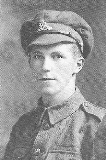
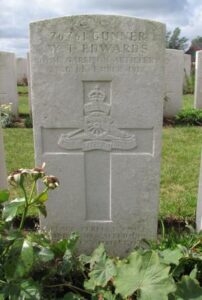
Sidney Lloyd, Private, 74729, Kings Liverpool Regiment. Sidney was the son of Morgan and Agnes Lloyd, of Merbach, Clifford, Hereford. He was serving with the 85th Labour Company, King’s Liverpool Regiment at Dale when he met and married Winifred James, of Cliff Cottages, Dale on 20 July 1917. Sidney was then posted to France with his company, which moved to Ypres. Sadly, the young Sidney was wounded at Ypres, and evacuated to the Casualty Clearing Station at Remy Sidings, where he died of wounds on 17 September 1917, aged 19. He is buried at Lijssenthoek Military Cemetery, Belgium. Winifred remarried after the war, and died in 1968.
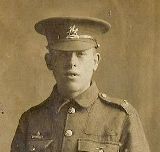
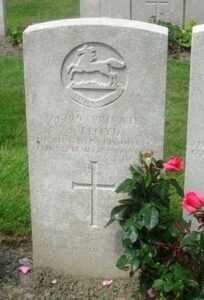
Clive Victor Llewellyn Reynolds, Private, 78046, Durham Light Infantry. Clive was born on 10 October 1898, the son of John and Hannah Reynolds, of Richmond House, Dale. He enlisted at Haverfordwest on 23 September 1916 into the Army Service Corps, before moving on to the 88th Training Reserve Battalion. On 1 October 1917 Clive was posted to the 15th Battalion, Durham Light Infantry, which was attached to 64 Brigade, 21st Division. The Division had originally moved to France at the beginning of September 1915 and had suffered terrible casualties at the Battle of Loos. It had also fought through the Somme Battles, and at Arras and Passchendaele, before moving to Cambrai, which is where Clive joined up with the battalion. After fighting through the Battle of Cambrai, the Division was posted near St. Quentin on the Somme. It was here on 21 March 1918 that it became one of the British Divisions to be hit by the German Spring Offensive which battered and swept through the Allied front lines. Clive was wounded by a bullet in his thigh during heavy fighting at Ham on 24 March 1918, and was taken prisoner by the Germans. Clive was brought back to Germany as a POW, and died of blood poisoning in hospital at Reserve Hospital 4, Trier on Mosel on 30 July 1918, aged 19. Clive is buried at Cologne Southern Cemetery, Germany.
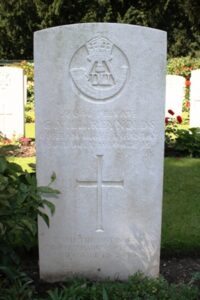
John Thomas, Private, 16284, Welsh Regiment. John was born at Dale in 1896, the son of Mark and Mary Thomas, of Wathwick. He worked as a farm hand prior to the war, and enlisted at Haverfordwest into the Welsh Regiment. John was posted to the 10th Battalion, Welsh Regiment, which was attached to 114 Brigade, 38th (Welsh) Division. The Division had landed in France during December 1915 and had spent its first winter in the trenches near Armentieres. In June it marched south to the Somme, where it was tasked with the capture of Mametz Wood. The attack on the wood began on 7 July 1916, but met with fierce resistance, and it took the Welshmen until 12 July to clear the wood. The Division suffered terrible casualties at Mametz, and was taken out of the line, and moved to Ypres to rebuild, taking up the front line north of Ypres, at Boesinghe, along the Yser Canal. On 6 May 1917 the 10th Welsh moved into the front line at Boesinghe, and after five days there were being relieved by the 14th Welsh on 11 May 1917 when John was killed in action by German shellfire. He was 20 years old, and is buried at Ferme-Olivier Cemetery, Belgium.
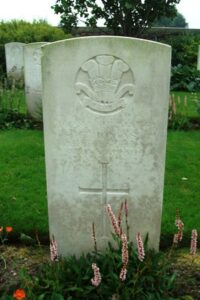
World War Two, 1939-1945
Norman Henry Davies, Able Seaman, Merchant Navy. Norman was the son of William Henry and Edith Florence Davies, and the grandson of William and Elizabeth Johns, of Dale. He served with the Merchant Navy aboard the S.S. Olga E. Embiricos, a Greek cargo steamer. On 29 January 1944 she was on route from Durban for Aden when she was torpedoed and sunk by the German submarine U-188, with the loss of 20 lives. Norman was 20 years old when he died that day, and is commemorated on the Tower Hill Memorial, London. Norman is not commemorated on the Dale Memorial.
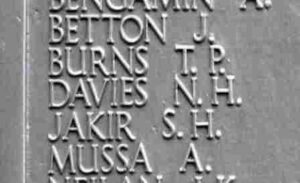
James Arthur Lloyd, Seaman, LT/JX 170660, Royal Naval Patrol Service. James was the son of Sidney and Winifred Lloyd, of The Cliff, Dale, later of Erwood, Breconshire. He served in the Royal Naval Patrol Service, aboard the armed H.M. Trawler Fifeshire. She was used for anti submarine work in the North Sea, and was on patrol on 20 February 1940 when she was attacked and sunk by German Aircraft off Copinsay, Shetlands. James was lost at sea aboard the Fifeshire that day. He was 22 years old, and is commemorated on the Lowestoft Naval Memorial, Suffolk.
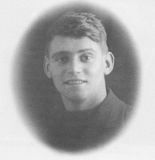
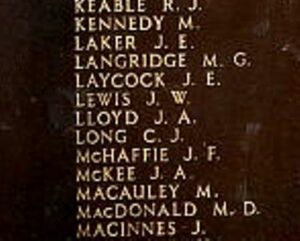
Other Military Burials at Dale
From 1943, Dale was home to HMS Goldcrest, a Royal Naval Air Station, which was used for operational duties and anti-submarine duties in the Irish Sea and the Atlantic. In 1944 the work was transferred to Brawdy, where a longer runway was built. There are five burials at Dale Churchyard, of servicemen who died whilst stationed here.
Kenneth Edward Bellchamber, Photographer, L/MX. 669317, Royal Navy. Kenneth was the son of William Edward and Charlotte Alice Bellchamber, of Wimbledon, Surrey. He died at HMS Goldcrest on 9 June 1946, aged 21.
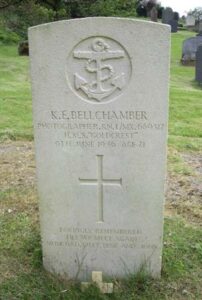
Andrew Carradice, Lieutenant (A), Royal Naval Volunteer Reserve. Andrew was the son of William and Elizabeth Carradice, of Carlisle, and the Husband of Eileen Carradice, of Truro, Cornwall. He died at HMS Goldcrest on 3 November 1944, aged 23.
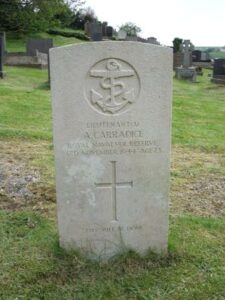
Hamish Muir-Mackenzie, DSC, Lieut-Commander, Royal Navy. Hamish was the son of Kenneth James Muir Mackenzie and Phyllis Mary Muir Mackenzie. He died in an ambulance after crashing his Mosquito on 18 June 1947, aged 29. He had been awarded the Distinguished Service Cross for his work during the Malta Convoys.
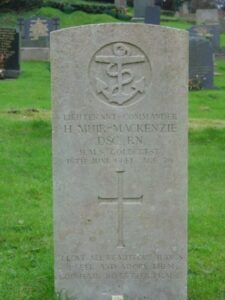
Alan Charles Thomas Parkes, Able Seaman, D/JX. 792328, Royal Navy. Alan was the son of James Leonard and Doris Parkes, of New Oscott, Birmingham. He died at HMS Goldcrest on 18 December 1947, aged 19.
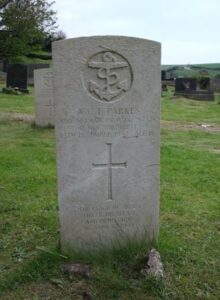
Peter Douglas Singleton, Sub-Lieutenant (A), Royal Naval Volunteer Reserve. Peter was the son of Ernest and Amy Singleton, of Leeds, Yorkshire. He died at HMS Goldcrest on 25 November 1944, aged 23.
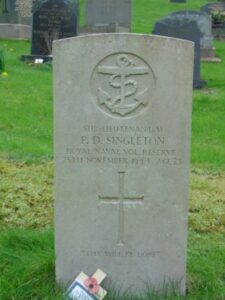
Hirano Maru Memorial
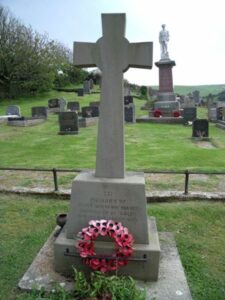
On 4 October 1918 a Japanese steamship, the Hirano Maru, was steaming past the coast of Pembrokeshire, as part of Convoy OE23, which had left Liverpool two days earlier, bound for Yokohama, when she was torpedoed and sunk by the German submarine UB-91, commanded by Wolf Hans Hertwig. The steamship sank with the loss of 292 lives, including a number of children.
Bodies were washed up all along the Pembrokeshire coast in the coming days, some of which were identified and buried around the county, notably at Angle, Dale and Milford Haven.
There is a memorial within Dale Churchyard to eight unknown people whose bodies were washed ashore locally between 4 and 29 November 1918, but were never identified. Because the bodies couldn’t be identified, they are not commemorated by the CWGC, so the villagers of Dale erected this cross after raising funds themselves.